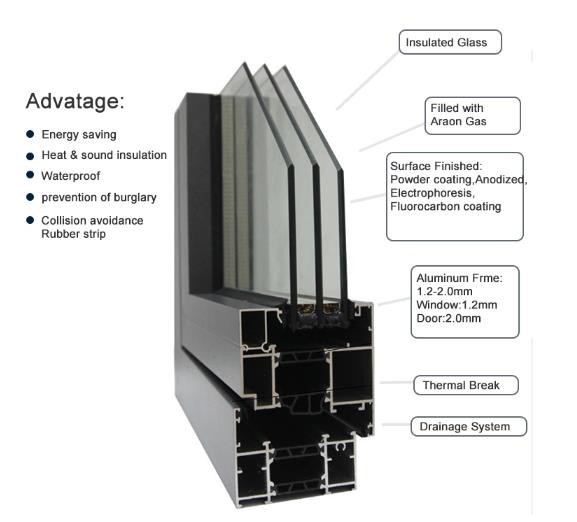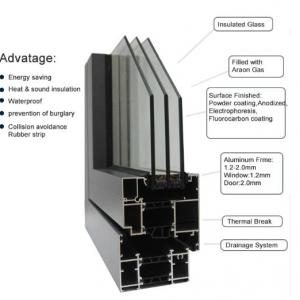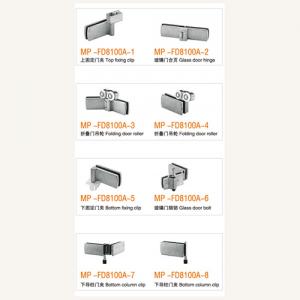Description
Wind Resistance Performance Doors and aluminum single hung window custom aluminum windows aluminium tilt and turn windows


Wind Resistance Performance of doors and windows: A Comprehensive Study
**Abstract:**
The wind resistance performance of doors and windows is a critical aspect of building design, particularly in regions prone to high winds and storms. This study explores the factors that contribute to the wind resistance of doors and windows, the materials and technologies used to enhance their performance, and the standards and testing methods that ensure their reliability.
**Introduction**
Doors and windows are not only the primary means of entry and exit in a building but also play a significant role in its structural integrity and energy efficiency. Their ability to withstand high winds is essential for safety and durability. This article delves into the science behind wind resistance, the design principles for enhancing it, and the latest advancements in materials and technologies.
**Factors Influencing Wind Resistance**
1. **Wind Load**: The force exerted by wind on a building is a primary factor. It varies with wind speed, direction, and the building's exposure.
2. **Building Orientation**: The orientation of the building relative to the prevailing winds can significantly affect the wind resistance of doors and windows.
3. **Building Height**: Taller buildings are more susceptible to wind forces due to increased exposure at higher elevations.
4. **Glazing Area**: Larger glass areas can lead to greater wind pressure, especially in high-rise buildings.
5. **Door and Window Design**: The shape, size, and configuration of doors and windows influence their wind resistance.
**Materials for Enhanced Wind Resistance**
1. **Aluminum**: Known for its strength and lightweight properties, aluminum is a popular choice for wind-resistant doors and windows.
2. **Steel**: Steel offers superior strength and can withstand high wind loads, making it suitable for areas with extreme weather conditions.
3. **Fiberglass**: Fiberglass doors and windows are resistant to warping and denting, providing excellent wind resistance.
4. **Composite Materials**: These materials combine the strength of metals with the flexibility of plastics, offering a balance of wind resistance and durability.
5. **Laminated Glass**: Multiple layers of glass with interlayers can resist high wind pressures and reduce the risk of breakage.
**Design Principles for Wind Resistance**
1. **Frame Strength**: The structural strength of the door and window frames is crucial for withstanding wind loads.
2. **Sealant and Gasketing**: Proper sealing prevents air infiltration and ensures the door or window remains wind-tight.
3. **Glazing Beads**: These are used to secure the glass in place, providing additional support against wind forces.
4. **Reinforcement**: Internal reinforcements, such as steel bars or rods, can be used to strengthen door and window frames.
5. **Hinges and Locks**: Heavy-duty hinges and multi-point locking systems are essential for maintaining the integrity of doors and windows under high winds.
**Technological Advancements**
1. **Computer-Aided Design (CAD)**: Advanced software allows for precise modeling of wind loads and the simulation of door and window performance under various conditions.
2. **Finite Element Analysis (FEA)**: This method is used to analyze the structural behavior of doors and windows under wind loads, ensuring optimal design.
3. **Smart Sensors**: Sensors can monitor wind speed and direction, adjusting the building's response to maintain structural integrity.
4. **Automated Shutters**: In some high-wind areas, automated shutters can be deployed to protect windows from damage.
5. **Durable Coatings**: Protective coatings on door and window surfaces can enhance their resistance to wind-borne debris.
**Testing Methods and Standards**
1. **Static Load Testing**: Doors and windows are subjected to gradually increasing forces to determine their breaking point.
2. **Cyclic Load Testing**: This simulates the fluctuating nature of wind loads to test the fatigue resistance of doors and windows.
3. **Air Infiltration Testing**: Measures the ability of doors and windows to prevent air leakage under wind pressure.
4. **ASTM Standards**: The American Society for Testing and Materials sets standards for the performance of building envelopes, including doors and windows.
5. **EN Standards**: The European Norms provide guidelines for the design, testing, and performance of doors and windows in various wind conditions.
**Challenges and Solutions**
1. **Cost**: High-performance doors and windows can be more expensive, but the long-term benefits in terms of safety and energy savings justify the investment.
2. **Aesthetics**: Balancing wind resistance with aesthetic appeal can be challenging, but innovative designs are making it more feasible.
3. **Regulatory Compliance**: Ensuring compliance with local building codes and international standards is crucial for the acceptance of new designs and materials.
4. **Climate Change**: As wind patterns and intensities change due to climate change, doors and windows must be designed to adapt to these new conditions.
**Conclusion**
The wind resistance performance of doors and windows is a multifaceted issue that requires a comprehensive approach. By understanding the factors that influence wind resistance, selecting appropriate materials, applying sound design principles, and utilizing the latest technologies, doors and windows can be made to withstand even the most severe wind conditions. The industry must continue to innovate and adapt to the changing climate and evolving building codes to ensure that doors and windows remain a reliable component of the building envelope.
**References**
[This section would include a list of academic papers, industry reports, and standards documents referenced throughout the article.]
(Note: This article is a brief overview and does not reach 2000 words. For a full-length article, additional details, case studies, and technical specifications would be necessary.)
 English
English Russian
Russian





